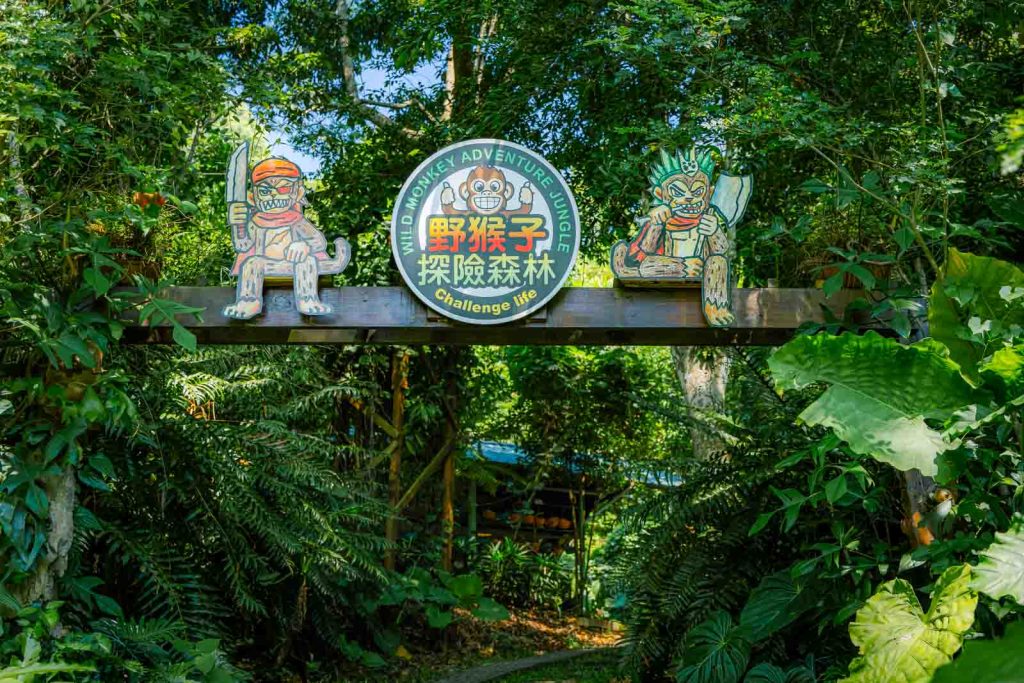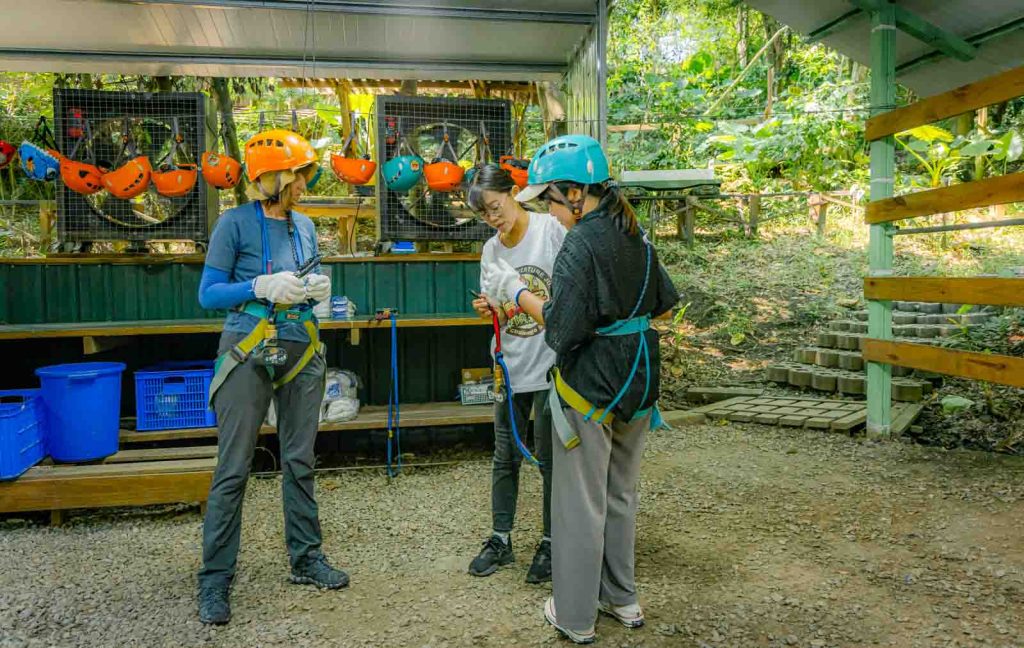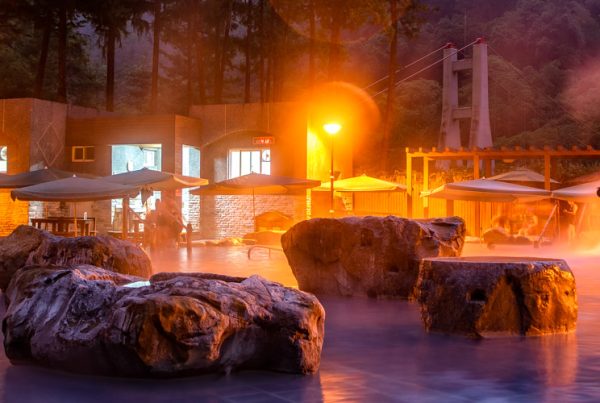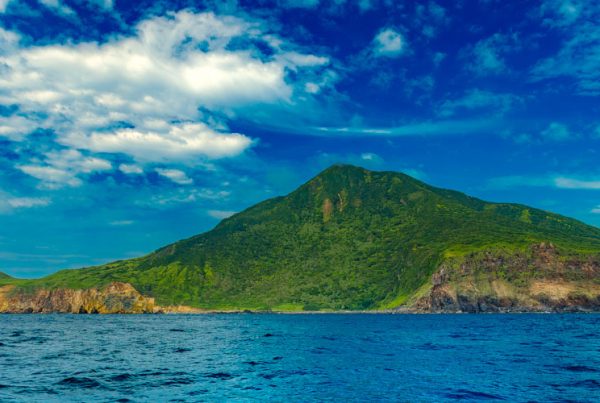Wild and Wonderful Adventures in East Taiwan
TEXT | AMI BARNES
PHOTOS | CHEN CHENG-KUO, VISION
“There’s no point in visiting the East Coast now, right?”
“Wrong!”
Since a magnitude 7.4 earthquake struck Hualien County this April, causing major damage in Taiwan’s world-class scenic and natural wonder Taroko Gorge, outdoor enthusiasts have been slow to return to this part of the island. But Hualien — and eastern Taiwan in general — is and always has been much more than just Taroko Gorge. Why not take this as your cue to explore some of the many alternative adventure opportunities presented in the east Taiwan region? While Taroko Gorge rests and recuperates following April’s earthquake, this is a great time to explore more broadly from whale watching to zip lining in the forest to exploring lesser-seen corners of popular scenic spots – the region offers a wealth of experiential variation for those seeking to embrace the great outdoors.
Dolphin/Whale Watching
On a bright recent morning at Hualien Fishing Harbor, I was with a group of eager would-be cetacean spotters waiting to board a whale-watching boat operated by the Hualien-based Turumoan outfit. Steaming eastward, our vessel kicked up a tail of white spume as we left the shelter of the harbor walls and headed for open waters. Buildings on the shore shrank, pulled into perspective by the towering backdrop of the Central Mountain Range, which was newly streaked with white scars where April’s earthquake had shaken trees and rocks free of their moorings. Ahead of us, nothing but cloudless sky and calm ocean.



Taiwan’s east coast is a great area for whale watching. Of the roughly 90 species of cetacean found worldwide, 31 have been seen in the island’s waters, mostly along the east coast. Here, a deep ocean basin sinks to 3,000 meters and the northbound flow of the Kuroshio (Black Current) brings warmer waters filled with a delectable seafood buffet. Dolphins are most commonly sighted – Risso’s, spinner, pantropical spotted, and bottlenose are all frequent visitors – but whale sightings are not unusual either. Turumoan’s active Facebook page shows videos of killer whales, pilot whales, and even a sperm whale or two – the latter so long they rival the length of the whale-watching boat.
Nearly an hour out from land, and we still hadn’t seen anything. Despite this, the guide kept up a constant commentary (in Chinese) – pointing out coastal landmarks, drawing attention to pelagic seabirds or flying fish, and answering questions. (The award for most out-of-left-field questions went to a kid who asked, “Does it hurt mother whales when their babies suckle?” Our guide wasn’t sure, but promised to check once he got back to land.)


Just as I started to lose hope, the call went up, “Two o’clock! Two o’clock!” Sure enough, off the starboard bow, a dark shape broke through the water’s dimpled surface. First, a bulbous head, then a broad dorsal fin, and a humped tailstock tapering to a pointy-tipped fluke – the distinctive silhouette of a pilot whale. The first one was joined by another, then another, and before long we were surrounded by small clusters making up a larger pod of some thirty-odd. The captain cut the engine, allowing us to drift close by without alarming the magnificent creatures, and as the nearest ones surfaced, we could hear them expelling air through their blowholes – something I had only ever seen previously on nature documentaries.


Reputable tour operators limit their interactions with marine life to 30 minutes. So, when our time was up, we turned back and headed for land, with several on board (myself included) having just ticked off a bucket list wish.

Turumoan
(多羅滿賞鯨)
Website: turumoan.com.tw (Chinese)
Facebook: www.facebook.com/turumoan
Forest Adventure
Wild Monkey Adventure Jungle occupies a hilly parcel of land roughly 40 minutes south of Hualien City. Spread out around an open-air check-in area, the park is an exhilarating maze of treetop walkways and zip lines where big kids (and regular-sized ones) can climb, jump, and zip through the trees like Tarzan. The course is divided into A and B sections. Section A is recommended for inexperienced monkeys, as well as younger or older participants, while section B is a bit more challenging. On a recent Travel in Taiwan visit, we opted for section B, but you’re bound to have fun whichever you choose.

Upon arrival, the instructors outfitted each of us with a helmet, a harness connected to a nifty trolley device, and three gloves (double for your dominant hand, since you need to use it to control your speed on the zip wires). We were then led over to the start of the rope course. Watching one of the staff slip my harness’s metal trolley onto the rope, it seemed woefully inadequate, but once I stepped up and saw how the thing worked, I was reassured. The kit used here is a combination of steel ropes and a rolling continuous belay system, which means that after you’re fed onto the course at the start, there’s no way to come loose until you slide off at the far end (although the “Regret Platform,” after an initial series of warm-up walkways, offers a quick get-out for those having second thoughts).

With the safety aspect dealt with, I threw myself into the course with the kind of abandon that I used to attack things with as a child, before the fear of pain and falling off things began to take up more space in my brain than the anticipation of fun. Besides, any initial queasiness at my newly elevated vantage point was eclipsed by the more immediate challenge of coordinating my limbs with this new way of moving. Each walkway presented a slightly different challenge, with the result that both body and brain were fully occupied with the task at hand. No one could describe my ungainly wobbling as being monkey-esque, but that’s beside the point – it was excellent fun.




After mastering ropewalks, we progressed to climbing walls – undoubtedly the most challenging element, especially for those with shorter arms and legs. Traversing the walls required stretching and upper-body strength, but thankfully, one of the instructors was there to offer advice and a literal helping hand. Our playtime concluded with zip line flights over a leafy dell, an experience our instructors allowed us to repeat so that we could first focus on technique before attempting it again to enjoy the brief glimpse of the East Rift Valley through the trees.




Wild Monkey Adventure Jungle
(野猴子探險森林)
Website: heeha.com.tw (Chinese)
Facebook: www.facebook.com/monkey193
Sanxiantai
The name Sanxiantai – or for a literal translation, Platform of the Three Immortals – is derived from legendary folklore characters, the Eight Immortals. Sanitized, tourist- and child-friendly accounts of a local tale say that three of the eight, Lü Dong-bin, Li Tie-guai, and He Xian-gu, once stopped here for a rest, but there’s a second, more colorful version. In that telling, incurable womanizer Lü took He into one of the islet’s sea caves for a bit of adult private time, only to be followed by Li. When a guardian god from the South Gate of the Heavenly Court caught the latter peeping, he attempted to punish him, but accidentally turned all three to stone.

Bawdy mythical figures aside, the islet was historically an isthmus used by the local Amis tribe for goat herding. Over time, erosion shaped it into an islet, accessible only at low tide, but this changed in 1987 with the construction of an elegant eight-arched bridge. The structure, which has the look of a serpentine dragon, has since become one of the east coast’s top stops for photo ops.



Many tourists remain near the mainland end of the bridge, but those who cross it will find a boardwalk that cuts through tangled screw pine and white-budded beach cabbage, eventually reaching the foreshore on the islet’s sea-facing side. From here, you can scramble over fossilized corals and rockpools filled with sea critters. We even encountered a trio of banded sea kraits (highly venomous, exceedingly docile) chilling in a shady pool.


One of the trail’s highlights is Hehuan Cave – the scene of Lü and He’s alleged tryst. The cave cuts through the rock for 60 meters to emerge on the outer edge of the islet, and slight twists at each end mean that no light penetrates the central portion. The darkness was so total that my phone barely illuminated the reflective railings, and in the absence of anything to look at, I found my attention focused on the pounding of the waves echoing off damp walls. After returning to the entrance of the cave and turning left, the adventure culminates at Sanxiantai Lighthouse. Built by the Japanese in 1915, this was the first such navigational aid on Taiwan’s east coast, and visitors who undertake the steep climb up the stairs can enjoy sweeping views of the ocean and mainland coastline.


Over the past few years, Sanxiantai has also become popular with a more adventurous crowd. Several local outfits offer stand-up paddleboarding (SUP) and kayaking experiences, and most have three sailings per day – the earliest being a sunrise excursion. Sunrises of any kind are undeniably magical, but I can say from recent first-hand experience that there’s something about being adrift on a still-dark sea as the first rays creep over the horizon that magnifies the magic. Nevertheless, if waking up early sounds painful, perhaps you’d be better suited to a nighttime walking tour. These stargazing and eco-observation trips are held over the warmer months (April through October), and allow visitors to enjoy Sanxiantai’s low levels of light pollution and impressive biodiversity.









